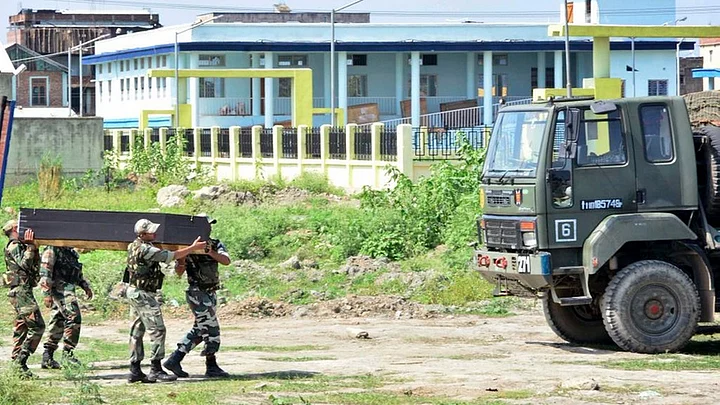It would be no surprise to those who had handled Myanmar affairs that Naypyidaw would be reluctant to agree to organise joint operations against Naga rebels – as requested by NSA Ajit Doval and Foreign Secretary S. Jaishankar during their June 17 visit.
This impression is clearly emerging, despite officially sponsored publicity in some sections of the media that the Indian team “has secured that country’s consent for joint operations” but with a caveat “when feasible”.
I should also quote Bertil Lintner, one of the most knowledgeable authorities on Myanmar telling an Indian correspondent in November 2011 that Myanmar “fights insurgents on its own terms” and did not “want to get into the kind of joint operations that India wants”.
This impression was quite clear to us in the early 1990s when we had conducted a very discreet but highly productive dialogue with them – after which they themselves smashed some of our rebel structures in their territory.
Of Adverse Reactions and High Tempers
It is also amply clear that our government at the highest level did not consider diplomatic complications of publicising a cross border raid on June 9 into Myanmar territory in which two alleged Naga(Khaplang) camps were destroyed, “killing several militants” as was claimed initially.
As a result of an adverse Myanmar reaction, we had to send our senior security-diplomatic team to Myanmar to explain our action. The Irrawaddy (June16) said that the visit was to “calm tempers over a rare cross-raid against insurgents that it trumpeted as a warning to countries harbouring anti-India militants”.
It also added:
Days after Indian Special Forces crossed into Burma from two northeastern states to hunt down militants who had killed 18 soldiers in an ambush, it turns out that the operation was minor and only low-level rebels were targeted.
– The Irrawaddy, an independent publication
Had our intelligence agencies been better informed they would have known that Myanmar was angry with us since it interfered with their internal peace efforts which was started on the personal initiative of President Thein Sein with international help to stop their bleeding insurgency.
This policy has been described as “the pivotal element of political reform” of the new government in 2011. The Myanmar Peace Centre (MPC) was specially created – directly under the president for implementing this, consequent to Myanmar’s agreement with the Norway-led Peace Support Group, supported financially by UN, Japan and others.
Takeaways from the Myanmar Operation
The President envisaged that MPC would coordinate nationwide peace initiatives and act as a one-stop service centre for donor governments and international non-governmental organisations (INGOs) who want to support the peace process.
In addition, MPC would also facilitate two-tier negotiations locally and at a national level between government and ethnic militia groups. 13 insurgent groups had signed bilateral ceasefire agreements by mid-2012.
Khaplang Group was the 12th resistance group to sign a ceasefire on April 9, 2012. MPC had concluded two agreements with them after their ceasefire. The first was on April 9, 2012 between the Sagaing-based Khaplang group and Sagaing Region Minister Kyi Naing. The second was at a higher level on August 16, 2013 with Minister U Aung Min, head of the MPC.
Our “Cross border” raid on June 9 breached these agreements and embarrassed Myanmar. It is almost like the Chinese Commandos raiding Dharamshala on allegations that HH the Dalai Lama was causing unrest in Tibet.
Also, a mechanism for such border incidents had been arrived at earlier between our two governments. India is cited among “International Actors” along with China, ASEAN, United States, Finland and OIC, supporting their peace moves.
Myanmar Peace Monitor, the authorised news agency of the nation, says this about India:
India has established military ties with Myanmar to tackle cross-border insurgency and has committed to develop border areas and trade and investment agreements. During Indian PM’s visit to Myanmar in May 2012, the Myanmar government invited India to assist in the development of the Naga Self Administered Zone in Sagaing Region and Chin State, including the opening of border markets to boost local economies.
– Myanmar Peace Monitor, news agency
In the past the Indian Army had tried to enhance Myanmar Army’s counter-terrorism capacities and had even handed over heavy road building machinery to them in May 2010.
A sudden Rambo raid into their territory has upset all these.
(The writer is a former Special Secretary, Cabinet Secretariat. He was part of the 2 Member 26/11 Mumbai terror attack Enquiry Committee.)
(At The Quint, we question everything. Play an active role in shaping our journalism by becoming a member today.)
